The art of early engineering education
Embracing creativity, four faculty inspire the next generation of engineers
By: Brooke Fisher
By day, they are engineering faculty focused on teaching and research. And by night, a handful of engineering faculty — possibly more — are writers, illustrators and even actors.
But they share more than a creative streak. The following four faculty have a passion for educating an even younger audience than the undergraduate classes they teach. By reaching out to the earliest of audiences, from elementary school students to teens, they ultimately hope to engage and inspire the next generation of engineers.

A colorful way to communicate
While volunteering with an organization that provides free science classes to youth, chemical engineering Assistant Professor Julie Rorrer struggled with how to best explain complex research topics — so she went back to the drawing board.
“It got me thinking how difficult it is to explain science research to a third grader,” says Rorrer, who was a University of California, Berkeley, graduate student at the time. “The program [Bay Area Scientists Inspiring Students] motivated me to think about ways to better communicate, and truly explain without over-simplifying.”
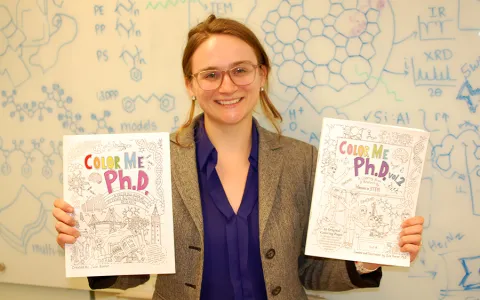
of two volumes of coloring books titled ColorMePhD.
Embracing her lifelong passion for “art and doodling,” Rorrer made a hand-drawn coloring page to explain her recently published research about how to create sustainable fuels from plant waste. She began working with other Ph.D. students and postdocs to develop metaphors and illustrations to explain their research, too. She soon had 16 illustrations and the first volume of “ColorMePhD” was released in 2018, available to download for free.
“People were excited about this material and content, so I decided to keep going,” says Rorrer. “The audience is now everybody; I’ve found these are helpful in explaining science to adults, too.”
For the second volume, Rorrer invited scientists to contribute artwork. After noticing the majority of submissions were from women, she decided to focus the second volume exclusively on women scientists. To further enhance diverse representation of what scientists look like, she also created a special series to highlight “History-Making Scientists” who are Black, Indigenous and people of color. Branching out into another playful medium, Rorrer helped illustrate a printable board game called Hydrogeland, modeled after Candyland, which uses candy such as gum drops to explain materials called hydrogels.
In addition to more than 30,000 downloads combined of the two volumes of coloring books and Fun at Home coloring pages, Rorrer is often tagged in social media posts from students and teachers.
“One heartwarming one was when ColorMePhD got tagged in a post by someone who said they’d never seen a scientist in a coloring book wearing a hijab like them,” says Rorrer. “The best thing is to see people using these coloring pages and enjoying them.”
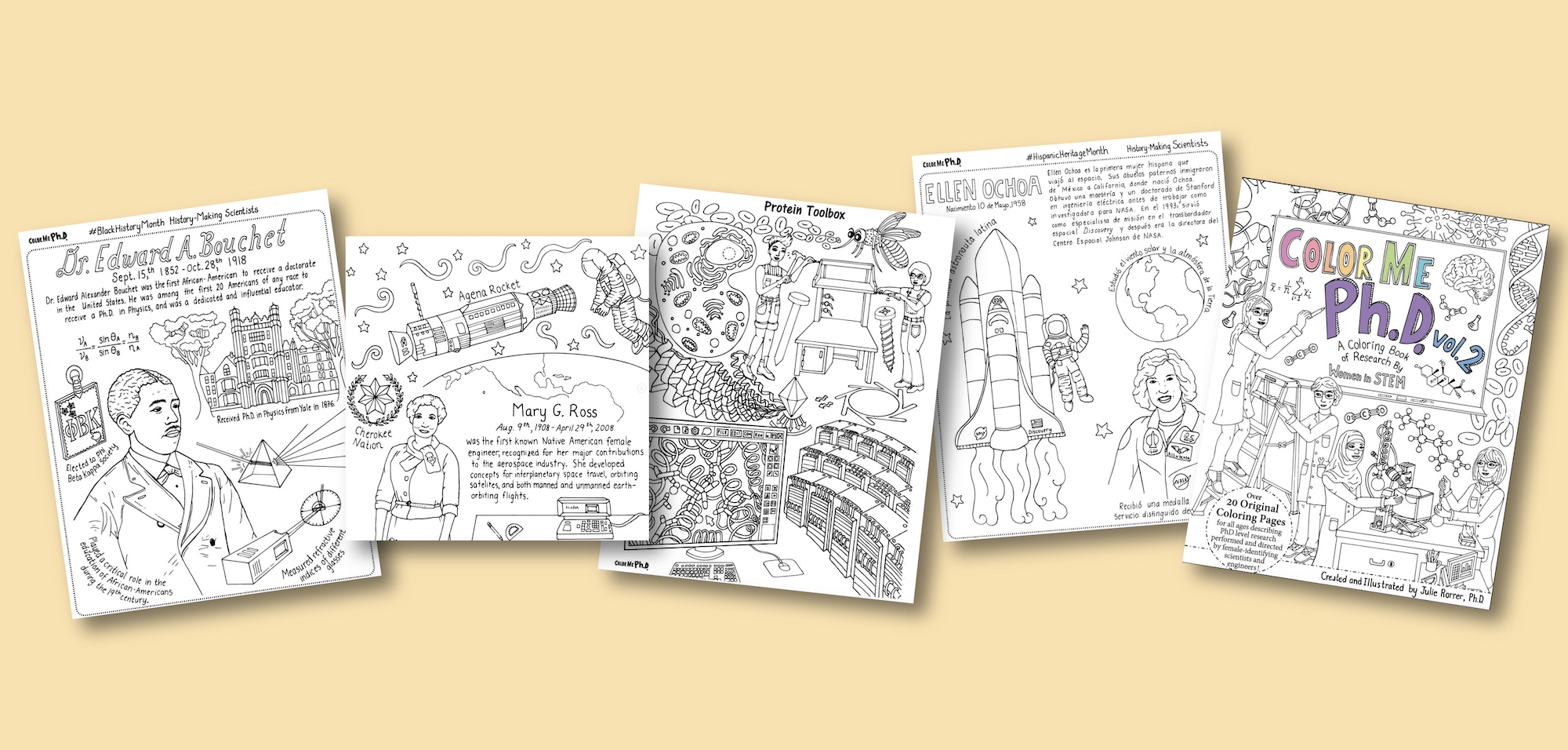
Color it!
Available to download for free: two volumes of ColorMePhD, printable board game Hydrogeland, “History-Making Scientists” series, and additional coloring pages; some also available in Spanish.

Book smarts: Encouraging more youth to explore science
Once upon a time, there was a professor who was inspired to write children’s books — three, in fact — to introduce more youth to science and engineering.
“It seems like there’s one person on planet Earth reading them at any given time, and that makes my day,” says civil and environmental engineering Professor Faisal Hossain about his children’s books, which are available for check-out from the public library.
“It’s a healthy exercise to pursue passion projects. The journey teaches us so many things along the way.”
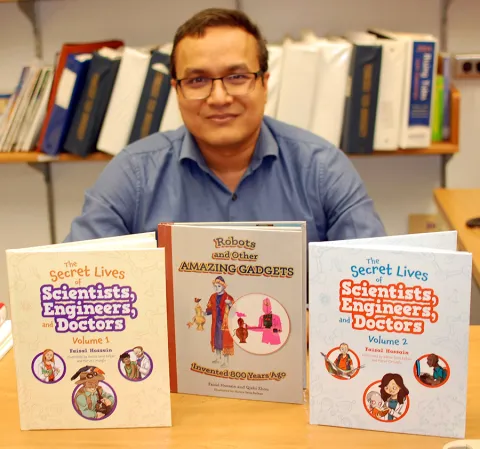
Hossain’s foray into children’s books began five years ago through his involvement with the New Voices storytelling initiative, which aimed to enhance diversity throughout the science fields. Hossain led the development of a compilation of stories from engineers, scientists and doctors that detail what motivated them to pursue their careers. The narratives formed the first volume of “The Secret Lives of Scientists, Engineers and Doctors.” A second volume closely followed.
“The first two books were basically to address the issue of diversity in STEM, so kids could see someone who looks like them or struggles like them or is different,” Hossain explains. “When I grew up, I watched the show Doogie Howser, M.D. — The character was a straight-A student, had a perfect SAT score and was a Harvard doctor by age 14. But most people are not like that.”
Hossain also published a third children’s book in 2022 titled “Robots and Other Amazing Gadgets Invented 800 Years Ago.” A collaboration with electrical and computer engineering alumnus Qishi Zhou (MS ‘21), the book features historical inventions that were inspired by the natural world, including a water-powered robot that helps wash and dry people’s hands.
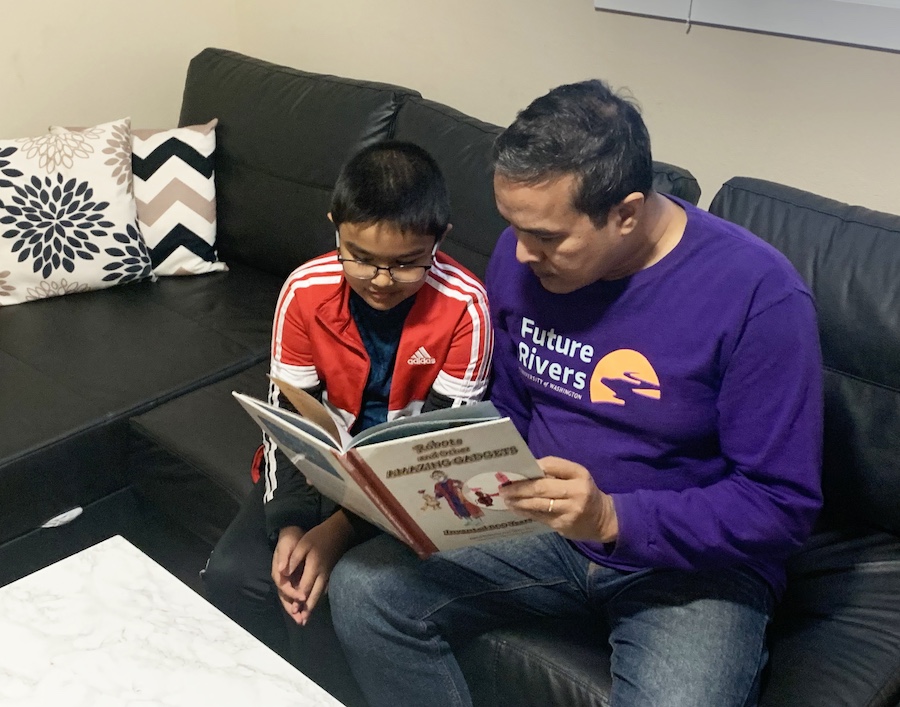
Currently working on a slightly different medium — an undergraduate textbook on hydrologic remote sensing — Hossain enjoys encouraging students who approach him to share creative ideas of their own.
“I tell students that if I can do it, anyone can do it. All you need is the idea and the rest will follow,” Hossain says. “It’s a healthy exercise to pursue passion projects. The journey teaches us so many things along the way.”
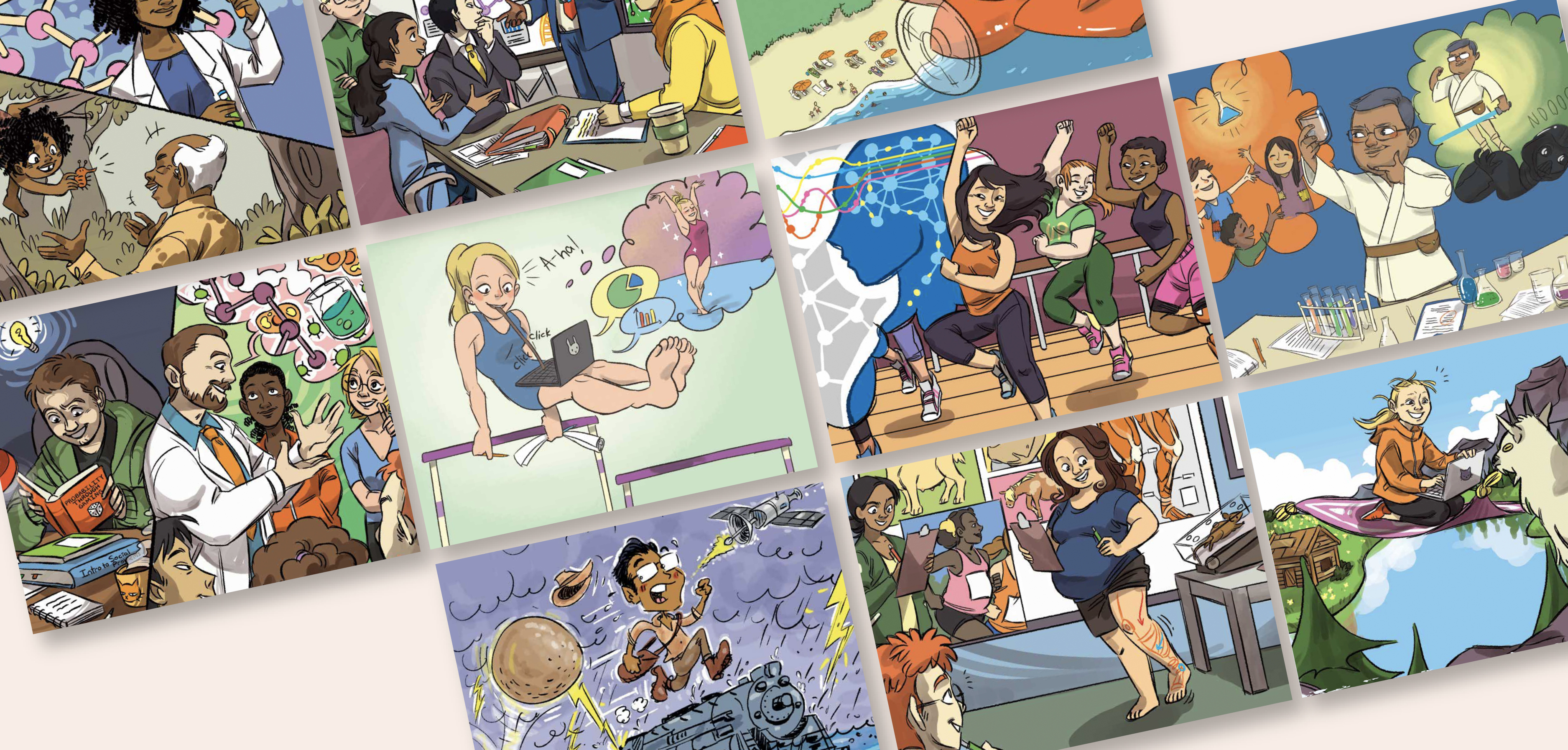
Check it out!
In addition to being available at many public libraries, pdfs of the books can be downloaded below:
- The Secret Lives of Scientists series: Volume 1 and Volume 2
- Robots and Other Amazing Gadgets Invented 800 Years Ago

A head start: Learning about neuroscience
The brains behind a series of acclaimed science videos that teach youth about neuroscience — from the intricacies of how vision works to brain computer interfaces that treat neurological disorders — is Eric Chudler, research associate professor in bioengineering.
“I thought video would be a way to reach a younger audience: elementary school, middle school and high school students studying biology or psychology,” says Chudler, who is the executive director of the UW Center for Neurotechnology. “I don’t dumb down the science; I try to use clear language so they can understand it.”
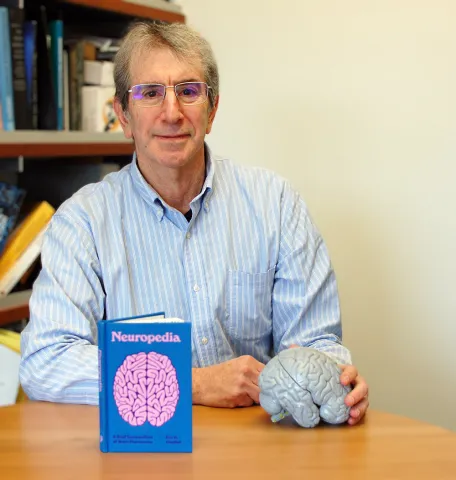
to science videos. He’s also an author of six books about the brain, the most recent
“Neuropedia: A Brief Compendium of Brain Phenomena” pictured.
The pilot episode of “BrainWorks” was produced more than 15 years ago, after Chudler reached out to UW Video (formerly UW TV) with his idea. Although he was told this was something they didn’t normally do, they were interested. In the series, now comprised of six episodes, Chudler talks through neuroscience topics and gives hands-on demos while teen actors ask questions and have lively discussions that help them understand the wonders of the brain. As co-producer and host of the shows, Chudler is heavily involved in just about every aspect of production, from coming up with topics to securing funding to drafting scripts with help from UW Video producers and editors.
“We do it together,” says Chudler about the collaboration with UW Video. “They always check with me on scientific accuracy. And we go back and forth with the humor part. BrainWorks is not wacky, but we do include humor in the shows.”
Chudler hopes youth will take away knowledge about healthy brain habits, from wearing a helmet to getting a good night’s sleep to the importance of exercise. On a deeper level, he hopes to ultimately encourage students to consider studying neuroscience in college.
“I hope it motivates them to take the next step, to go to the library or do a science fair project on something related to the brain,” says Chudler. “I hear from teachers and students all the time who are using the videos and wish there were even more episodes.”
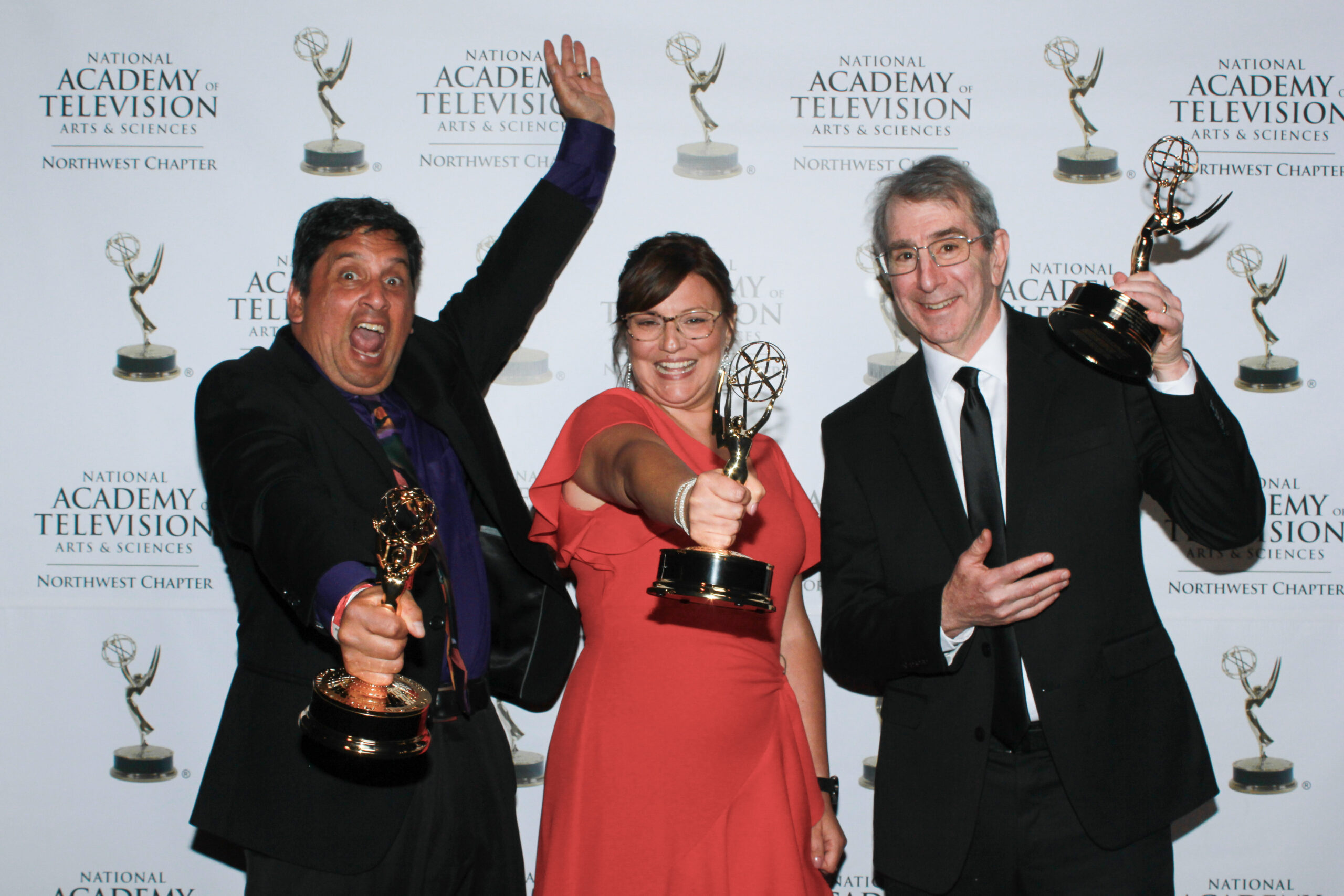
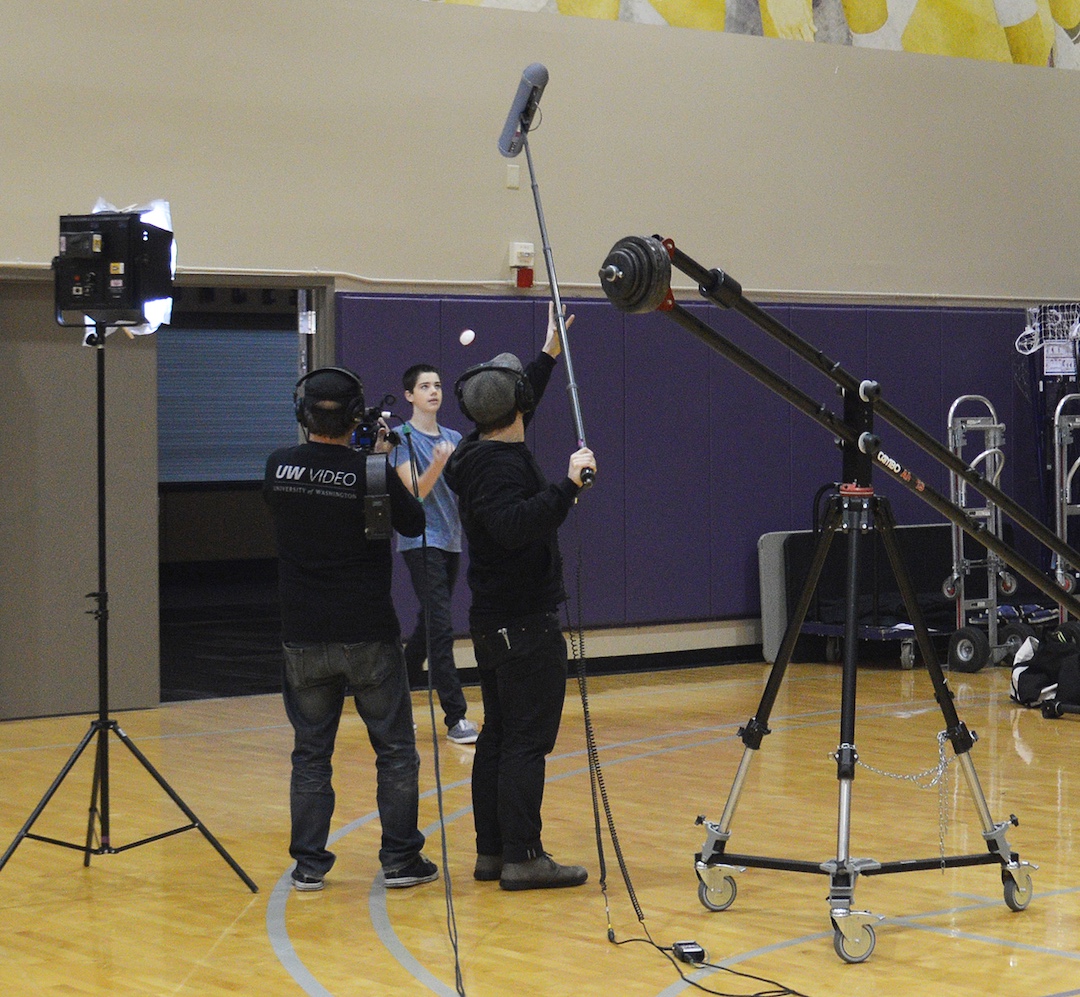
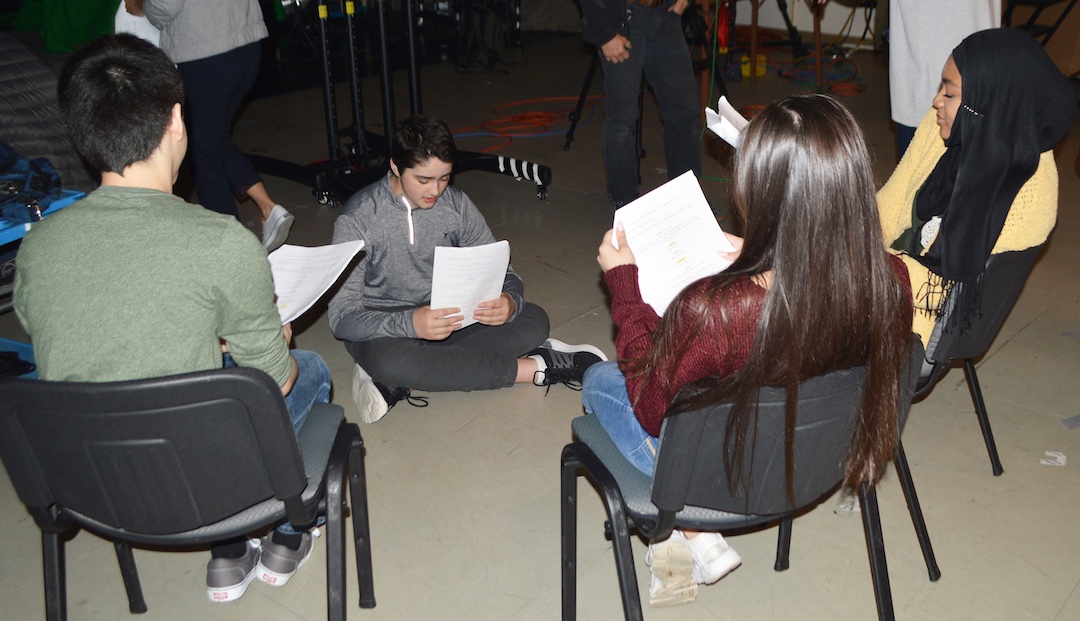
Left: At an award ceremony following the acceptance of a Northwest Regional Emmy® in 2023 for the episode “BrainWorks – Vision and the Brain.” Top right: The UW Video film crew in action. Bottom right: The teen actors review their scripts. Photos courtesy of Eric Chudler.
Northwest Regional Emmy® Awards
The BrainWorks shows have been honored with two Northwest Regional Emmy® Awards:
- In 2023, for the episode “BrainWorks – Vision and the Brain”
- In 2017, for the episode “BrainWorks – Exercise and the Brain”

A cautionary tale for teens
When it comes to developing the latest cutting-edge technologies, Tadayoshi (Yoshi) Kohno, a professor in the Paul G. Allen School of Computer Science & Engineering, has a mix of words of warning and words of wisdom to share — for which he has embraced science fiction writing.
“It’s more broadly accepted that technology is not universally good, but that opinion is still not ubiquitous,” says Kohno, who co-directs the Security and Privacy Research Lab and Tech Policy Lab. “My fear is that the more we focus on innovation for the sake of innovation, the more we risk diverging from an equitable and just perspective.”
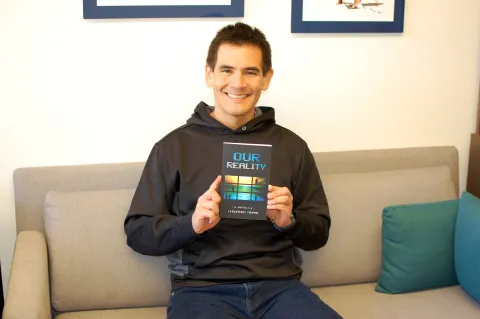
In a novella titled “Our Reality,” published in 2021, Kohno hopes to inspire youth, especially middle and high school students — who may one day be software designers — to carefully consider both the impact of technology and the need for more inclusive, thoughtful design practices.
“In my ideal world, people in high school social studies classes would read this book and have an opportunity to reflect on the relationship between society and technology. Technology doesn’t exist in isolation,” says Kohno. “These types of conversations shouldn’t happen in the technology community, but outside of it.”
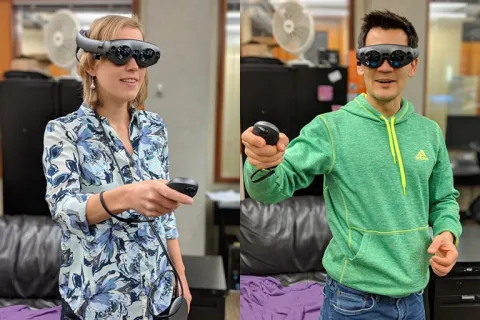
of mixed reality technologies in the Security and Privacy Research Lab, which has in turn
informed his novella. Photo courtesy of Yoshi Kohno.
In the futuristic story, set in the year 2034, Kohno creates a world that is intentionally unjust and inequitable. The protagonist, a 16-year-old Black girl named Emma, lives the majority of her life online, from attending high school to social activities, utilizing mixed-reality technology. Throughout the story, Kohno plants flaws in the technology in the form of design missteps, which he hopes will serve as starting points for conversations about a variety of topics, from unequal access to racism. Examples include Emma’s inability to authentically represent herself in the avatars, a blind character who struggles to use the technology, and facial recognition systems that are less accurate for Black people.
“My personal belief is that the more we can do to help people understand the harms, the better,” says Kohno. “Fiction has a valuable communicative role. Stories can make things feel personal in ways that a purely technical conversation doesn’t.”
“My fear is that the more we focus on innovation for the sake of innovation, the more we risk diverging from an equitable and just perspective.”
Read it
- Buy a copy: Paperback and Kindle versions are available on Amazon.com
- Download for free: A downloadable pdf, companion document and full list of resources are available on the “Our Reality” webpage
- Learn more: A Q&A with Yoshi Kohno